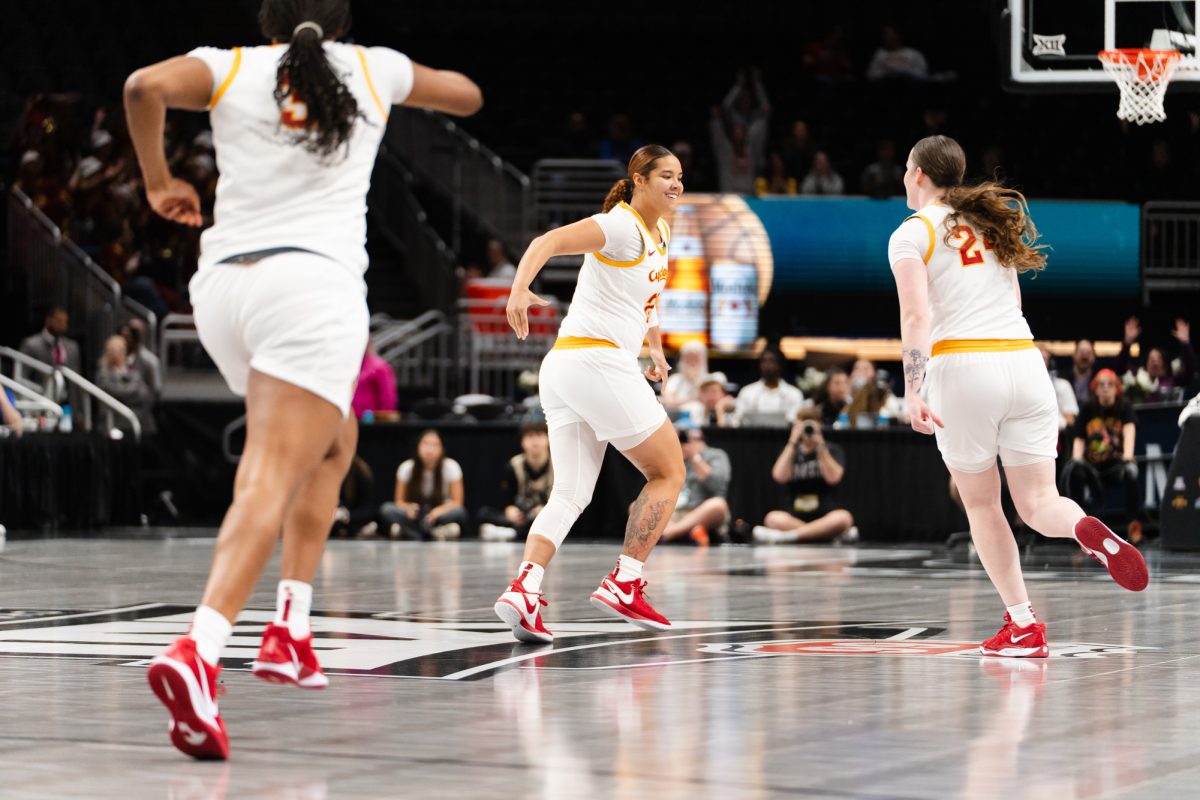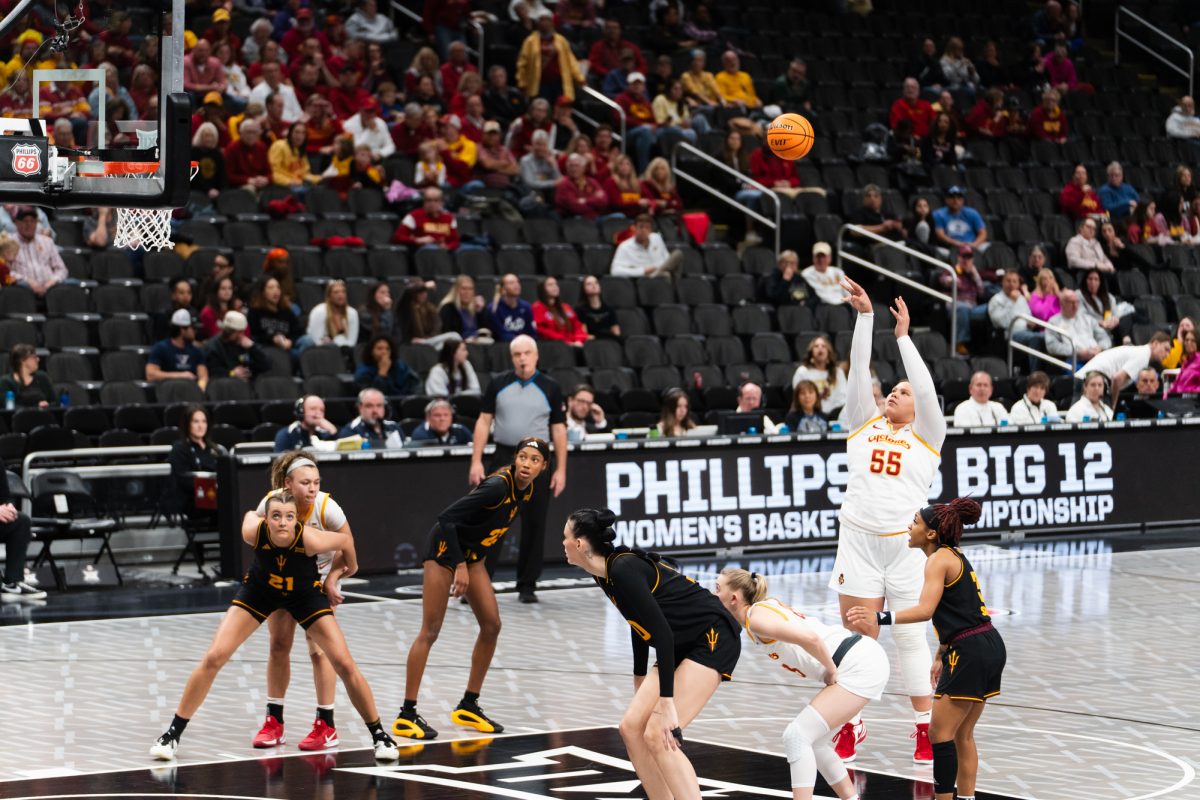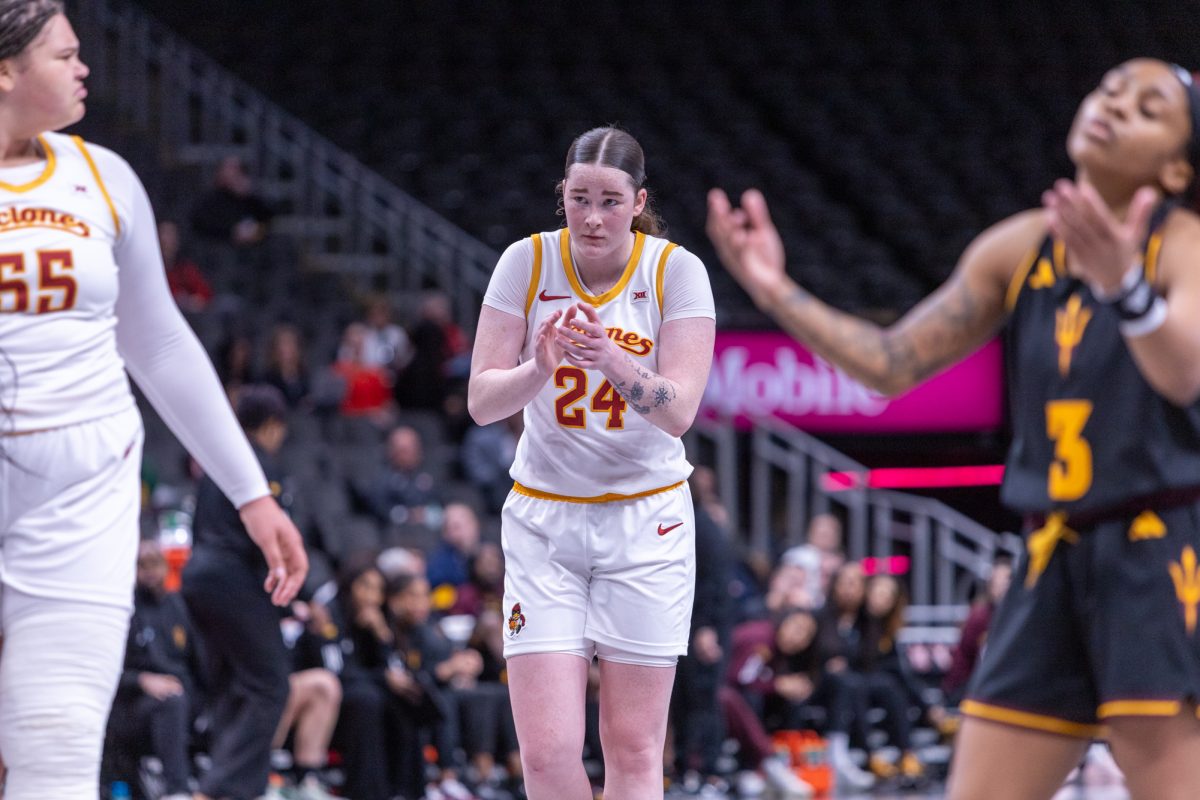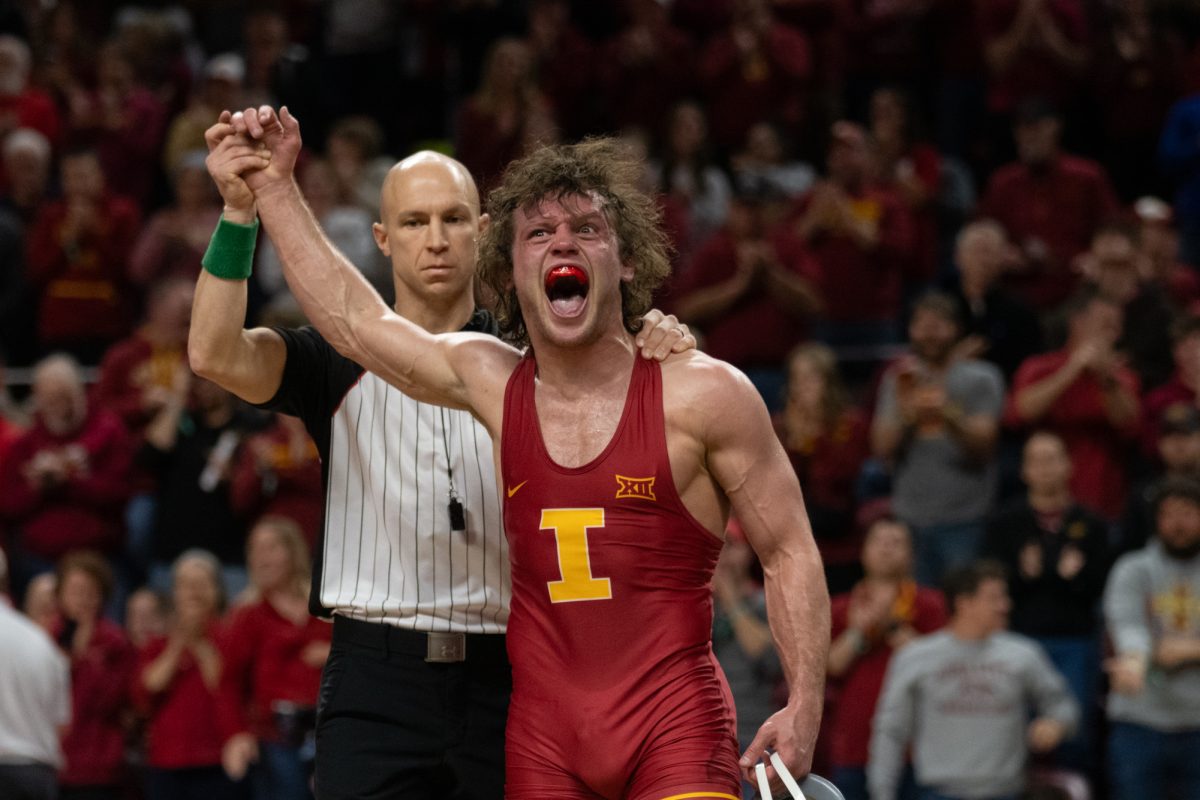Meat judging: It’s what’s for dinner
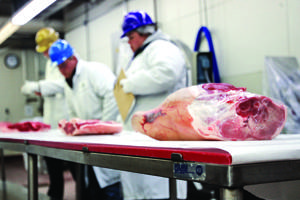
Meat judging: It’s what’s for dinner
October 11, 2008
Surrounded by beef carcasses in a chilly 35 degrees, Iowa State’s meat judging team practiced for a competition at the Dakota City Tyson Food Plant last Friday.
The competition, the Iowa State Invitational Meat Evaluation Contest, was held from 7 a.m. to 3 p.m. Saturday in the Meat Lab in Kildee Hall. One of the six teams competing was from Iowa State.
Iowa State’s team has five members — three women and two men, although most teams had four members.
The competition consisted of 16 classes or exhibits. The teams were split up into four different groups and then went around together to judge each of the exhibits.
In the exhibits, the meat pieces are graded on muscle, fat and quality. The teams evaluated the meat, then scored it, some of which required competitors to explain the reasoning behind their scores.
“This process really makes them evaluate, and then mentally and physically defend their opinion,” said Jonathan Campbell, extension program specialist in the department of animal science.
The contestants wore white labs coats, hair nets and hard hats with clipboards in hand. They were required to face away from the exhibit.
At exhibits, the competitors walk into a room with their backs to it. Then the “group leaders” — the people who watch the competitors while they evaluate the cut of meat — blow a whistle to notify the students they can turn around and face the exhibit. But, the contestants wait two minutes before they can actually walk up to the meat. After the two minute marker, the group leader yells “walk in,” which notifies the group they could walk up to the exhibit. The competitors then grade and score the pork chop based on his or her opinion.
Rick Jones, official committee member and USDA Meat Grading & Certification Branch, exemplified and explained the process of judging meat during the beef grading exhibit where a carcass hung from the ceiling by a large metal hook.
First, Jones looked at the whole carcass to look for anything out of the ordinary. Then he looked at the ribeye for marbling and fat.
“There are three main qualities: select, choice and prime,” Jones said.
The Official Committee plans and sets up the whole competition, including each exhibit. The committee members give each exhibit what they would score. Then the committee scores all of the contestants’ work based on what the committee members thought. Whoever is closest to the committee’s members’ scores wins. The committee is usually made up of core professors and industry professionals.
The contest has individual and team winners for each exhibit.
Each team is together for three semesters as they compete. The teams practice and often have meetings during which they have classes and visit labs to study, learn and evaluate.
“These teams learn the skill but also learn how to work with others, they really form a camaraderie with their team,” said Joseph Cordray, professor of animal science.
“This is training for them to be better evaluators,” said ISU coach Sherry Olsen, graduate student and lecturer in animal science.
The competitors can use what they learn at these competitions for their future jobs, Olsen said. Some future job options for students who are in meat judging teams include grading meats, research and development in the meat industry and educating other people.
“Another good thing you get out of this is when you go grocery shopping, you know which meat is better,” Jones said.
The ISU competition is different than most collegiate contests because Iowa State has a couple exhibits students face that are not normally a part of other standard collegiate competitions, such as an increased emphasis on processed meat.
“We are also the only university that offers independent intercollegiate contest by one individual school,” Campbell said.
Iowa State also had a turkey exhibit, which no one else has in their competitions. Competitors had to choose the top four out of the eight hanging turkeys.
The other competitors were from Kansas State University, North Dakota State University, South Dakota State University, University of Missouri and the University of Nebraska.


